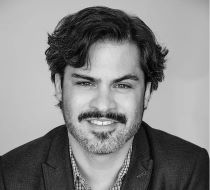In
The People’s Hospital: Hope and Peril in American Medicine, Dr. Ricardo Nuila tells a fascinating, eye-opening story about the American healthcare system and follows the journeys of five uninsured individuals, each with their own extreme health crises, who find their way to Ben Taub Hospital, a charity hospital in Houston, Texas, where they were all seen and treated by Dr. Nuila. There, they were given the healthcare they needed, which they otherwise would not have received if they had gone to a private, for-profit healthcare facility. The hospital, which was termed a safety-net hospital, runs as a level 1 trauma center and is publicly funded by the county. According to Dr. Nuila, “…the brokenness of the American healthcare system means that there are gaps and those have formed over decades, really… and those gaps where people are uncovered. There have been hospitals that have put as their mission to care for people in those gaps and those are safety-net hospitals… many of them are public hospitals like the one where I work, but some of them can be non-profit or for-profit hospitals. They’re trying to provide care to that portion of people who just don’t fit into our healthcare system. Again, that’s a growing amount of people because we pegged health insurance to work and so as the labor market changes and people become unemployed there’s more people needed and so… it’s a good amount of people who actually need the care of safety-net hospitals.” For the patients who make 150% at or below the federal poverty level, their care it provided for through property taxes. Individuals who make above that, like some of the people in his book, pay out of pocket. However, because insurance companies are not involved and doctors are paid on salary, there’s no profit motive from these hospitals so patients pay relatively low, affordable prices.
For Nuila, listening to patients’ stories goes hand in hand with being a physician. “Medicine gives these moments with people, these precious moments with people where there’s an honesty that occurs often with patients. There’s a vulnerability that is revealed and hopefully you can reciprocate, you know, your own vulnerabilities with patients and forging that trust. That’s really precious and special and I think it really helps with the understanding of these stories and the desire to depict them.” In addition, he wanted those intimate portraits of his patients to help move the story along and keep the audience captivated. He remarked, “I feel like the stories were the foundation. The initial thought was, ‘I just want to write patient stories and I want to write these stories about people that have not been told before. We don’t know how hard it is for some of these people to live and to get through life and to find healthcare.”





Want to join the discussion?
Feel free to contribute!